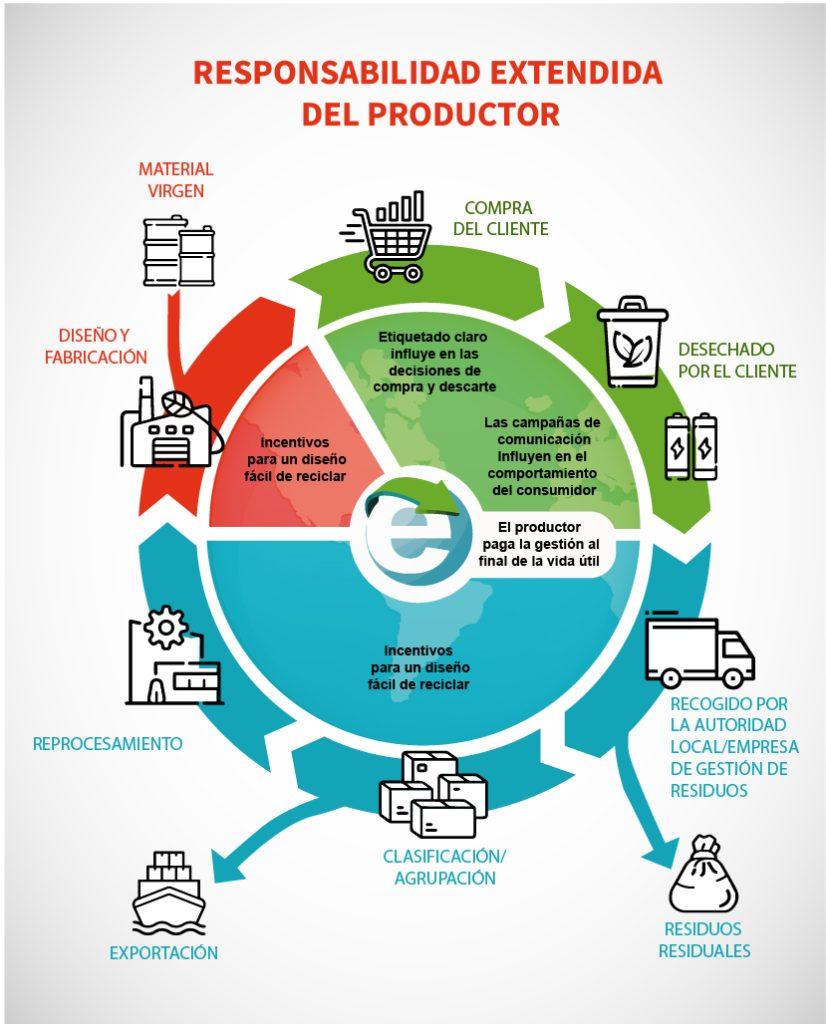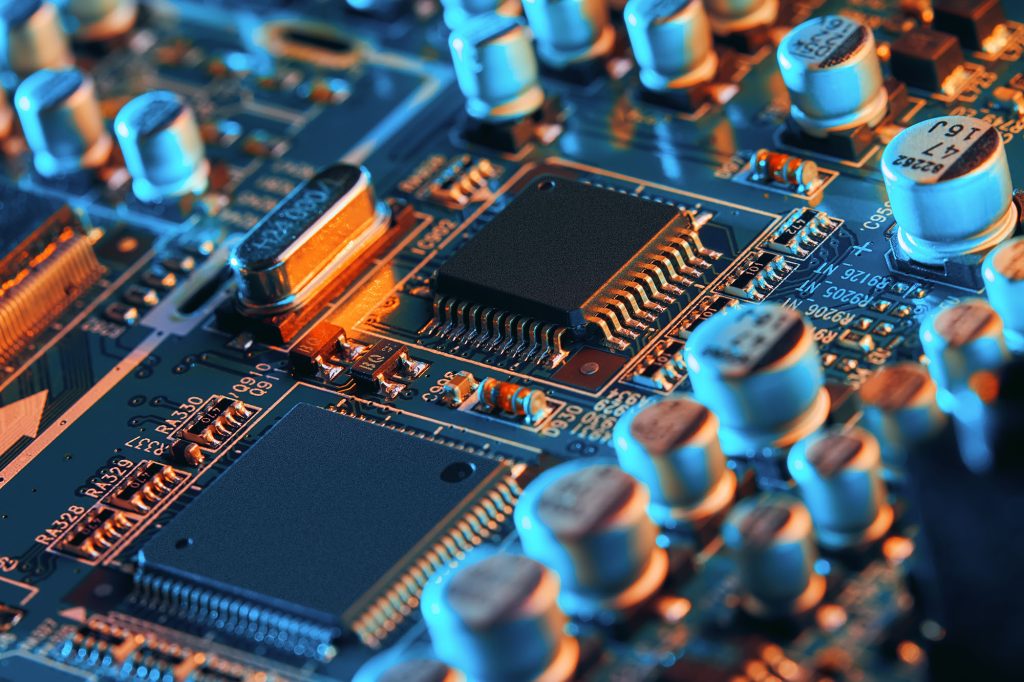+1-809-692-9784
Zona Franca San Isidro, Santo Domingo Este, República Dominicana.
+1-787-285-5686
1300 Calle John Smith, Humacao, Puerto Rico 00791.
Services
PROGRAMAS DE RESPONSABILIDAD EXTENDIDA DEL PRODUCTOR
What is an Extended Producer Responsibility Program for WEEE?

Extended Producer Responsibility Programs
An Extended Producer Responsibility Program (EPR) for Waste Electrical and Electronic Equipment (WEEE) is a waste management approach that shifts the primary responsibility for the proper management of WEEE from consumers and governments to the manufacturers and producers of electronic devices.
Instead of consumers simply discarding their devices at the end of their useful life, REP programs state that producers must take responsibility for collecting, recycling and properly managing WEEE. This has several objectives:
1. Promote sustainability: REP programs seek to promote sustainability by reducing the amount of WEEE that ends up in landfills or is improperly treated. By making producers responsible for managing the waste from their products, they seek to minimize environmental impact and promote recycling and reuse practices.
2. Stimulate eco-friendly design: By making producers responsible for the management of their products at the end of their useful life, it incentivizes the design of more durable, repairable and recyclable products from the outset. This can lead to waste reduction and reduced extraction of natural resources.


3. Optimize resource management: Recovering valuable materials from WEEE, such as precious metals and reusable components, contributes to the circular economy by reintroducing these materials back into the supply chain, rather than extracting new resources.
4. Reduce risks to human health: La gestión inadecuada de los RAEE puede liberar sustancias peligrosas en el medio ambiente, lo que representa un riesgo para la salud humana y el entorno. Los programas de REP buscan minimizar estos riesgos a través de una gestión responsable.
5. Promote public awareness: REP programs can also educate consumers about the importance of proper WEEE management and encourage more responsible disposal practices.
In summary, Extended Producer Responsibility Programs for WEEE aim to improve the management of electronic waste, promote sustainability, reduce environmental risks and promote more responsible design practices by manufacturers.

How is a REP Program implemented?
Implementing an Extended Producer Responsibility Program (EPR) involves a series of coordinated steps and actions between regulators, manufacturers and other stakeholders involved in product and waste management. Here are the basic steps to implement an EPR program:
1) Legislation and regulation:
The first step is to establish laws and regulations that define the responsibilities of producers in the management of end-of-life products. These laws should describe the specific obligations of producers in terms of collection, recycling, financing and reporting.
2) Definition of products and categories:
It is important to clearly define which products are subject to the REP program and to divide them into categories for ease of management. This may include classifying electronic devices by size, type and function.
3) Establishment of goals and objectives:
Regulators may set collection and recycling targets that producers must meet. These targets may be based on the quantity of products placed on the market or other relevant factors.
4) Financing:
Producers must contribute financially to the WEEE management system to cover the costs of collection, transport, treatment and recycling of waste. Details on how this funding is calculated and managed should be defined in the legislation.


5) Design of the collection system:
Producers should establish effective collection systems for WEEE. This may include setting up collection points in stores, recycling centers or manufacturers' own facilities.
6) Education and awareness:
REP programs often include education campaigns aimed at both consumers and producers. This helps to inform about the importance of proper WEEE management and to promote sustainable practices.
7) Reporting and compliance:
Producers must submit regular reports on the amount of products placed on the market and how they are managing WEEE. Regulatory authorities monitor producers' compliance with established regulations.
8) Management and recycling:
Collected WEEE must be transported to appropriate treatment and recycling facilities. Here, separation of reusable components and proper disposal of hazardous substances is carried out.
9) Evaluation and adjustments:
REP programs should be evaluated regularly to ensure that they are achieving their objectives and make adjustments if necessary to improve their effectiveness.
Successful implementation of a REP program requires effective collaboration between regulators, producers, consumers and other stakeholders to ensure proper and sustainable management of electronic products and their wastes.
What are the functions of an Authorized WEEE Manager?
1) Collection and transportation:
The authorized manager is in charge of collecting WEEE from different generation points, such as collection points in stores, collection centers or facilities of other actors involved in the management of this waste. Subsequently, it transports the WEEE in a safe and controlled manner to its facilities or the facilities of other specialized managers.
2) Temporary storage:
Collected WEEE must be properly stored in controlled and secure facilities before being submitted to treatment or recycling. The authorized manager must comply with specific regulations for the temporary storage of these wastes, avoiding environmental and public health risks. Treatment and recycling: Authorized handlers are responsible for carrying out the treatment and recycling of WEEE in accordance with established regulations. This may include decontamination, disassembly, separation of reusable components, recycling of materials and proper disposal of hazardous waste.
3) Adequate disposal:
When components and materials are not suitable for recycling or reuse, the authorized dealer must manage the final disposal in a safe and environmentally responsible manner. This avoids soil and water contamination as well as the release of hazardous substances. Documentation and records: Authorized managers must keep detailed records of the operations carried out, including the quantity and type of WEEE received, the treatment and recycling processes, as well as the waste generated. This is important for traceability and to comply with established reporting requirements. Regulatory compliance: Authorized handlers must comply with the specific regulations for WEEE management in their country or region. This involves keeping up to date on relevant laws and regulations and ensuring that their operations are in line with these regulations.
6) Education and awareness:
In addition to performing WEEE management operations, authorized managers can also play a role in educating and raising public awareness about the importance of proper management of electronic devices at the end of their useful life.
In summary, an Authorized WEEE Manager is essential in the process of managing waste electrical and electronic equipment safely, complying with regulations and contributing to environmental sustainability.
Services
Contact Us
Dominican Republic
Zona Franca, San Isidro. Edificios Multiusos I, Santo Domingo Este, República Dominicana. | +1-809-692-9784
Puerto Rico
1300 CALLE JOHN SMITH, HUMACAO, PUERTO RICO 00791 | +1-787-285-5686
